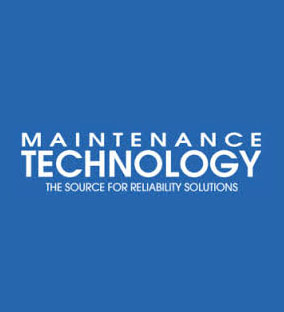Dr. Klaus M. Blache
University of Tennessee, Reliability & Maintainability Center
for Maintenance Technology
535 Plainfield RoadSuite A Willowbrook, IL 60527Ph: 847-382-8100www.efficientplantmag.com
The principle of Yin and Yang is based on the belief that all things exist as inseparable and contradictory opposites. This passage from The Ancient History Encyclopedia sums it up nicely:
“The two opposites attract and complement each other and, as their symbol illustrates, each side has at its core an element of the other (represented by the small dot). Neither pole is superior to the other and, as an increase in one brings a corresponding decrease in the other, a correct balance between the two poles must be reached in order to reach harmony.”
For our purposes, maintenance and reliability are the Yin and Yang of availability (and follow the same overall principles). The definition of one requires the definition of the othertobecomplete. Reliabilityisn’tabsolute;neitherismaintenance. Together, mean time between failure and mean time to repair define availability. Equipment systems are never 100% reliable, meaning some degree of maintenance is always involved and vice versa. As one aspect increases, the other decreases.
Consider the accompanying symbol: The black dot in the white pole signifies that there’s always some Yin in the Yang (or, for Maintenance Technology readers, some maintenance in the reliability process). Consider, too, the following points:
Yin-Yang balance can be affected by outside influences and is not static. Likewise, levels of reliability and maintainability will vary according to operations, resources, and other circumstances.
Yin-Yang describes how opposite forces are complementary and interdependent, i.e., dark-light, cold-heat, reliability-maintenance. Their interaction is thought to maintain the harmony of the universe and influence all within it. In a similar way, the reliability of everything (ROE) influences the world and its multitude of interactions. These are just a few examples.
My intent isn’t to delve into Chinese philosophy here, but to raise awareness of how everything we do (including reliability and maintenance) is inter-dependent. This includes safety, throughput, quality, cost, and so on. Reliability is a trade-off between design costs, risks, and consequences. In daily practice, it’s further complicated by unpredictable human behavior. For example, when you’re driving home from work and hear about an enormous lottery jackpot, do you go out of your way to buy a ticket?
The chance of winning (with Powerball) is typically 1 in 290,000,000. Thelifetime chance of dying in a car accident, however (according to the National Safety Council), is about 1 in 113. So, how lucky do you feel?
Speaking with industrial personnel around the world, I sense that they generally have a good grasp of maintenance concepts (although not all are adhering to best practices). The meaning of reliability and how it should integrate into practice is less evident to many. As a case in point, for three weeks this summer, I taught a “Reliability and Business Excellence” course in Germany for University of Tennessee engineering students. As our group visited various discrete manufacturing and process facilities, (automotive, aircraft, chemical, and food), we asked about the sites’ perceptions of reliability and maintenance. Regarding maintenance, we typically heard explanations about activities and methodologies, including emergency repairs, predictive technologies, preventive approaches, turnarounds, and the importance of availability. But, as for reliability, many of our hosts struggled with a clear answer. (Personnel at Dow in Stade, Germany, on the other hand, plainly understood the reliability and maintenance journey. No wonder: The Dow Chemical Company, in the U.S., has a mature R&M process.)
In German, maintenance is “lnstandhaltung;” reliability is “Zuverläβigkeit;”. No matter the language used or the location of the operation, one thing remains constant: Reliability and maintenance will always be the Yin-Yang of availability.
Based in Knoxville, Klaus M. Blache is director of the Reliability & Maintainability Center at the Univ. of Tennessee, and a research professor in the College of Engineering. Contact him at
© 2016 Maintenance Technology. All Rights Reserved.


